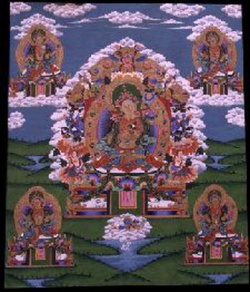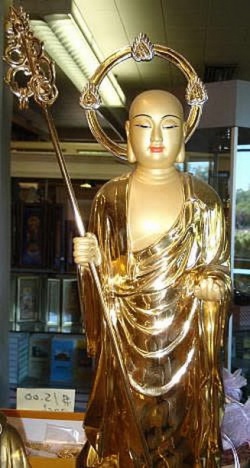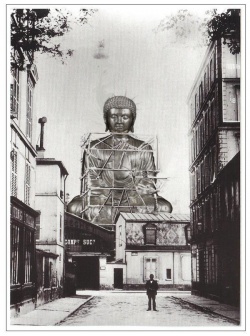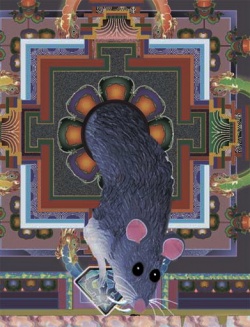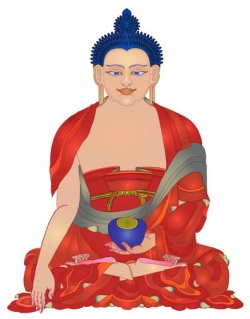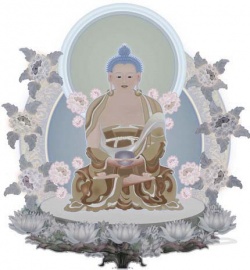The Three Universal Characteristics and Truths
The Three Universal Characteristics and Truths
In Buddhism, we always talk about enlightenment. Enlightenment is the complete and perfect understanding of the universe and our lives. The Three Universal Characteristics and The Three Universal Truths are important parts of Buddhist teachings and the doctrinal contents of wisdom.
The Three Universal Characteristics are connected with the existence.
They are:
1. Impermanence - all phenomena are impermanent
2. Not-self - all Dharma are not-self
3. Suffering - all sensations are suffering
As a result of understanding the three characteristics, we eliminate our attachment, and then arrives at the threshold of Nirvana.
The Three Universal Truths are similar to The Three Universal Characteristics. They are:
The Three Universal Truths are also known as The Three Seals, which is the yardstick to prove whether the teaching is abiding in Buddhism or not.
Sometimes, people add "suffering" to The Three Seals, i.e.
1. Impermanence
2. Not-self
3. Suffering
4. Nirvana
and call them "The Four Seals".
10.1 All phenomena are impermanent (Anitya)
One cannot step into the same river twice. Impermanence implies the interchanging and transient nature of existence. Our body is impermanent. Our mind is impermanent. Our feeling is impermanent. Our possessions are also impermanent. The world and human life are compelling images of impermanence. All things are marked or characterized by impermanence.
In Buddhism, we perceive that the process of constant changes of all things i.e. formation, development (dwelling), decay and emptiness, goes on and on.
There are many ways to realize and interpret the impermanent nature of existence.
1. Impermanence in succession - e.g. time.
It is continuously transient from moment to moment. We cannot exactly define what the present time is, as time has passed away whenever you say so.
2. Impermanence in cause and effect - e.g. germination of seed.
Under ever-changing conditions, we cannot exactly define at what stage the effect is developed from the causes. There is a continuity of cause and effect, but not permanence.
=3. Impermanence in composition, e.g. car.
In this world, there is not a car by itself but we can define the components which belong to the car.
4. Impermanence in antagonism, e.g. left and right.
Without the existence of a substantial and defined reference, left and right cannot exist.
5. Impermanence in relativity - e.g. good or bad.
There is no absolute goodness nor absolute badness. They are relative to each other.
6. Impermanence in name - e.g. colour.
The names of all phenomena are given and defined by human beings. It is only a convenient designation for us to recognize and differentiate objects.
It is important to note that impermanence is not non-existence. The subtle concept is that it exists but is impermanent in nature. There is nothing permanently independent, unchanged, absolute and "real" in the world.
Understanding impermanence is important not just for our practice of the Dharma but also in our daily life, such as friendship, marriage, career, wealth, health, etc. It is also an antidote for curing desire and ill-will. This is a key concept, consistent with the Law of Dependent Origination, to explain the nature of all phenomena - no substantial existence of their own.
10.2 All Dharma are not-self (Anatma)
First of all, we have to reiterate that Buddhism does not reject the convenient designation, the name "I", but rejects the belief in a real, independent, permanent entity that is represented by "I".
By definition of "I", in Buddhism, "I" is a permanent entity, which is:
1. independent
2. self-sovereign
3. immutable and impervious to change
Such a self is nowhere to be found!
Whatever is impermanent is not-self.
The body is not the self as it is impermanent and subject to change, decaying and death. Self does not possess the body because self cannot control the body preventing from sickness and old age.
The self is nowhere to be found within the body.
There are things belonging to the body, but there is not the body of its own. Similarly, the mind is not the self as our mind is forever jumping like a monkey.
The self is just a convenient name for a collection of factors, which are ever-changing, interdependent, impermanent physical and mental (personal) experiences, such as feelings, ideas, thoughts, habits, attitude, etc.
It is necessary to reject the idea of self because
1. It will harmonize our human relationship.
We respect others rather than defend ourselves. We trust others equally, rather than looking down upon them. We are able to relate to other people and situations, and not put ourselves in entangled position. So we can become more creative, more comfortable and more open-minded.
2. It is a [key of enlightenment]].
Ignorance is the most basic of our defilements, but the greatest ignorance is the belief on a self. With the notion of self, we are greedy, angry, in illusion, pride and prejudice. Seeing that the self is the source and the cause of all suffering, and seeing that the rejection of the self is the cause of the end of suffering, we have to train ourselves to reject and eliminate the idea of the self.
10.3 All sensations are suffering (Duhkha)
Whatever is impermanent is suffering because impermanence is an occasion for suffering.
It is an occasion of suffering and not a cause of suffering because impermanence is only an occasion for suffering so long as ignorance, craving and clinging are present.
As we crave and cling to the pleasant objects and feelings, hoping that they may be permanent, we are bound to suffer.
Failing to understand that all phenomena are impermanent is an ignorance. Craving for and clinging to these phenomena are the causes of suffering.
Suffering in Sanskrit word is called Duhkha, which has a broader meaning. It also refers to incompleteness and imperfectness.
Understanding that all sensations are suffering can build up our belief and faith towards Buddhism. Since faith is the mother of all merits and virtues in Buddhism, we should take every opportunity to understand it.
Therefore, suffering itself may be a good condition to enable us to believe in Buddhism.
10.4 The Eternity is Nirvana
Through the understanding of impermanence, suffering and not-self, we will have liberated ourselves from the ignorance. When all the defilements are removed, wisdom arises.
Just as when darkness is removed, light arises. And, when wisdom arises, we eliminate our attachment to existence and non-existence, and then arrive at the threshold of Nirvana.
Nirvana is a Sanskrit word which is originally translated as "perfect stillness". It has many other meanings, such as liberation, eternal bliss, tranquil extinction, extinction of individual existence, unconditioned, no rebirth, calm joy, etc. It is usually described as transmigration to "extinction", but the meaning given to "extinction" varies.
There are four kinds of Nirvana:
1. Nirvana of pure, clear self-nature -
It is commonly possessed by all individual sentient beings. It is not subject to birth and death, and does not increase and decrease.
2. Nirvana with residue -
The cause, but not all the effect (Karma) of reincarnation is cut off; the obstruction of affliction is removed, but not that of 'what is known' (Dharma), thus the body which remains is subject to birth and death. Those beings are Arhats.
Both the cause and effect of reincarnation are extinguished, both afflictions and 'what is known' (Dharma) are extinguished. All kinds of suffering are externally in stillness. There is no further residue. Those beings are Bodhisattva.
With wisdom and compassion, those who attain this kind of Nirvana will not dwell in birth and death nor in Nirvana, and will continue to rescue all living beings forever.
http://www.buddhistdoor.com/OldWeb/bdoor/archive/nutshell/teach10.htm


